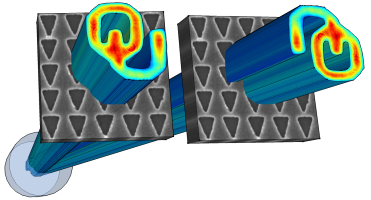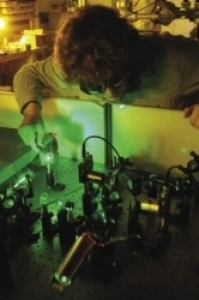Atomic, molecular, and optical (AMO) physics is a rich and active area of fundamental research that has led to the development of powerful quantum devices in the areas of sensing, navigation, and time keeping. The breadth and relevance of AMO physics is highlighted by a large number of Nobel Prizes awarded to AMO physicists. Frontiers in AMO physics include manipulation of atomic systems at the single quantum level, generation of quantum mechanical light fields, developing real world applications of quantum entanglement, extending the use of atomic systems for precision measurement beyond time and frequency standards, and engineering quantum matter. AMO physics is also an enabling science: Lasers, spectroscopy, magnetometers, nuclear magnetic resonance, fiber optics, and atomic clocks are AMO technologies that permeate other fields. Large sectors of the US economy have developed as a result of these discoveries.
AMO training leads to a wide range of high paying and intellectually rewarding jobs for students in academia, government, and industry. The AMO group at OU studies the interactions between and manipulation of atoms, molecules, and photons at low temperatures and energies. Current research areas in theory and experiment include the study of ultracold atoms and molecules, precise determination of interaction potentials and scattering properties, precision spectroscopy, quantum optics, ultracold Bose and Fermi gases, matter wave interferometry, quantum information and entanglement, and studying exotic bosonic and fermionic many-body phases with particular interest and effort toward realizing and understanding models relevant to condensed matter physics. These topics touch on many of the most important problems in physics today, such as quantum simulation and computing, tests of the standard model, quantum control, strongly correlated systems, and improved sensors that take advantage of the unique capabilities of AMO systems.

Since its inception, the AMO group at OU has been regularly funded by the National Science Foundation, the Department of Energy, the American Chemical Society, the Department of Defense, and various private institutions. Our experimental work is currently carried out in state-of-the-art laboratories in Lin Hall. This new Center for Quantum Research and Technology is situated right next to Nielsen Hall and made possible through extremely generous private donations.

Students who choose AMO experimental research work on cutting edge techniques with state-of-the-art equipment featuring advanced laser systems, optics, ultra-high vacuum technologies, fast electronics and novel single particle detection methods. A thorough knowledge of these systems forms the basis of the skill set that allows AMO students be successful in their future careers. Students choosing to pursue theoretical AMO research have many options including formal mathematical physics, computational physics, and experimental modeling. Our computational facilities include an extensive network of powerful computer workstations, which are freely shared among members of the department. When larger computational resources are needed the OU supercomputer is widely used within the AMO group. The OU supercomputer facilities have been ranked as high as the 14th most powerful in a US academic institution. The OU supercomputer center also has a large cadre of help staff to facilitate the use of the computer. The training in formal theory to computational methods offered by AMO theory at OU is ideal for preparing students for successful careers.